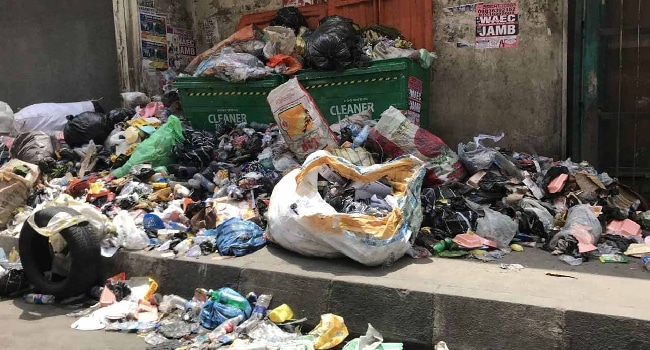Most Nigerians are usually waiting for lightning to tear across the sky and claps of thunder to follow before bringing out waste from their houses and pouring in the gutter, hoping that rain would flush them away.
But what happens when their hopes for rain are dashed? The wastes become a pressing environmental challenge in urban and rural areas of the country.
BattaFiles understands that the government’s have repeatedly shut markets for indiscriminate dumping of refuse and blocking of drainages.
From parties to restaurants and even stores, Nigerians get either polythene bags to package their foodstuff and other relevant items. After use, the waste products are dropped on the streets and sometimes drainages, leading to environmental contamination, contributing to climate change effects.
Scary data
According to research, improper waste management does not only result in litter everywhere, but also in air and sea pollution
A 2018 report named Nigeria one of the 10 most vulnerable countries to climate change in the world. Nigeria generates one of the highest amounts of solid waste in Africa, with 32 million tonnes per year. Most of these, however, end up in landfills, sewers, beaches, and rivers.
Nigeria’s total Greenhouse Gas emissions (GHG) are 492.44 million metric tons of carbon dioxide equivalent (MtCO2e), totaling 1.01 percent of global GHG emissions.
Harmful greenhouse gasses are created from decomposing waste. These rise up to the atmosphere and trap heat, causing extreme weather reactions in the form of storms and typhoons.
Another effect of improper waste disposal is flooding, which has rendered hundreds of persons homeless in urban and rural areas.
“As people recklessly dump their waste in the gutter, they block drainages and put the lives of many at risk. When drainages are blocked, there will be flooding and we all know how sad this development is,” report says.
Will Landfills help?
Landfills are sites designated for dumping rubbish, garbage, or other sorts of solid waste. They are the most common means of solid waste disposal which is either buried or left to pile in heaps.
READ ALSO
Nigeria’s Largest Recycling Waste Dumpyard
Flood-Prone Areas in Nigeria (2022 NIHSA Reports)
Video Of Flooded Streets In Lagos
While landfills are the current solution to waste management, a study conducted by Conserve Energy Future revealed that “most communities leave the landfills unattended to which cause land pollution and uncontrolled buildup of all sorts of solid waste materials. There are more than ten toxic gasses emitted from landfills, of which methane gas is the most serious.”
“Methane gas is naturally produced during the process of organic matter decay. The methane expelled during the decomposition of organic matter in unmanaged landfills has the potential of trapping solar radiation 20 times more effectively than carbon dioxide,” part of
“The outcome is increased urban and global temperatures.
“Aside from the methane gas, other household and agricultural chemicals that find ways to the landfills like bleach and ammonia can generate toxic gases that can greatly impact the air quality within the landfill vicinity. Dust, particularly matter and other non-chemical contaminants can also be expelled into the atmosphere, further contributing to air quality issues.”.
Also, the World Health Organisation (WHO) said the global warming potential of methane is 84 times higher than CO2.
Solution
In his 2012 research for Kano University of Science and Technology (KUST), Aliyu Nabego said current approaches at mitigation and adaptation to climate change in Nigeria have focused on restricting emissions of greenhouse gases but there have been no impact due to lack of awareness.
He, however, suggested that “recycling activities can significantly reduce the amount of solid waste that generates harmful GHGs. The real challenge is to incorporate it into the formal waste management structure and to provide safer, healthier working conditions than currently experienced by scavengers on uncontrolled dumpsites.”





